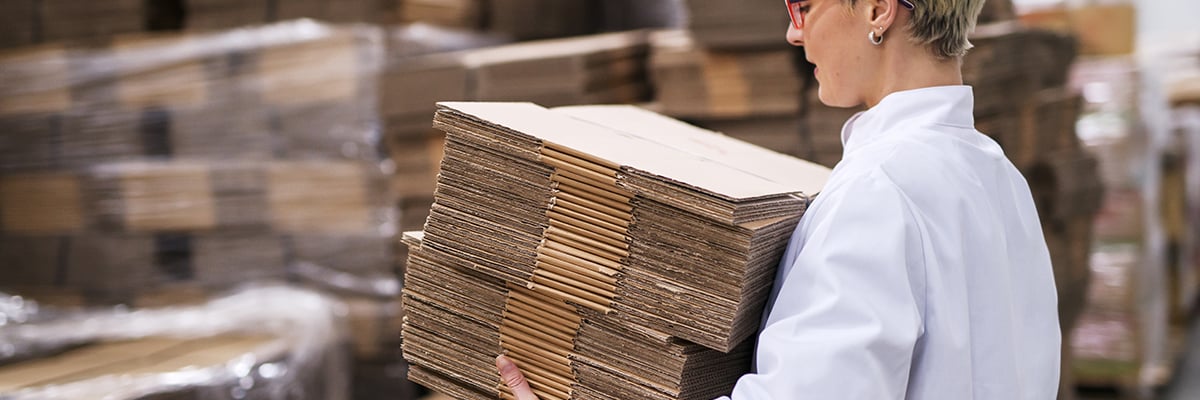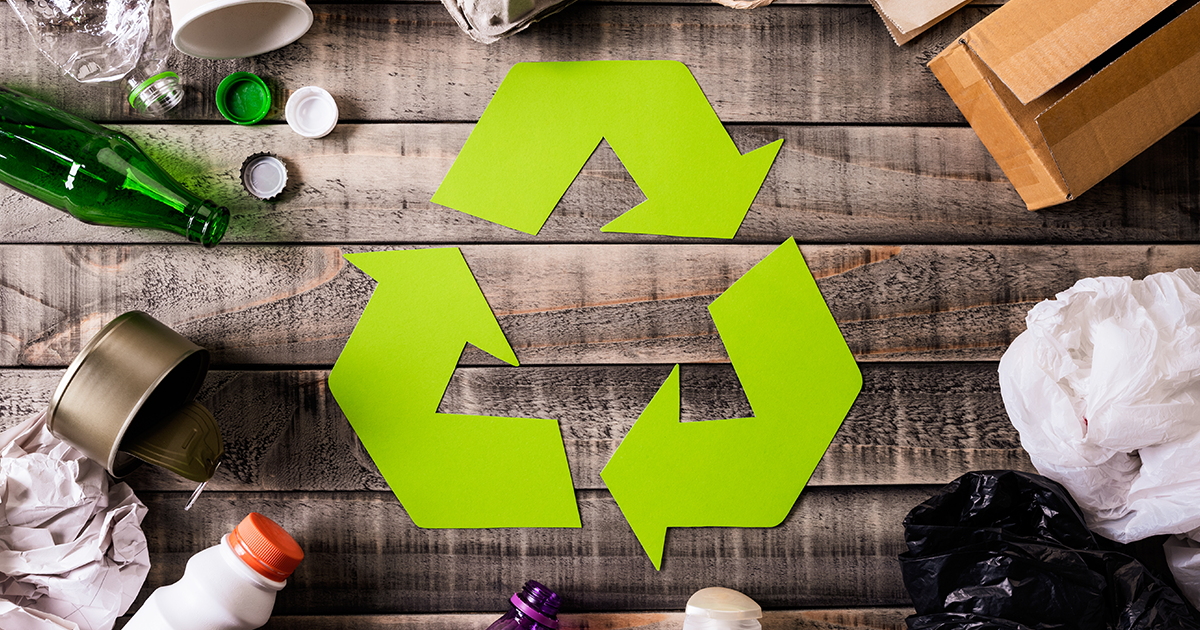Sustainable Packaging 101

Choosing eco-friendly packaging can positively impact your operations and public perception of your products. For instance, you can save on production and storage costs if you buy ready-to-assemble recycled packaging instead of customized packaging. Another factor is that consumers today consider the sustainability and environmental impact of the packaging for the goods they buy.
According to Shopify's The Future of E-commerce1, 72% of consumers worldwide want brands to use sustainable packaging. The report adds that three-quarters of consumers in the U.S. are more likely to buy a product if it is packaged sustainably. Many will even pay a premium for products with eco-friendly packaging. Nielsen2 had similar results in 2018, with 81% of global consumers expecting brands to invest more in business processes that help improve the environment.
Green product packaging fulfills your environmental responsibility and benefits your business's bottom line. But what is sustainable packaging? Is it as reliable as plastic packaging material? Where can you find packaging materials that are eco-friendly and durable while offering the correct brand value? More importantly, is recyclable packaging affordable? We'll answer these crucial questions below.
What Is Sustainable Packaging?
Packaging materials are sustainable if their life cycle generates much less waste than traditional plastic packaging. Additionally, they have a low carbon footprint, are biodegradable, easily recycled or reused, and don't contain toxic substances.
Since we're talking about an entire product life cycle, manufacturers of eco-packaging can reduce their carbon footprint in different ways:
- Material – choosing 100% recycled or recyclable materials
- Process – choosing packaging products made via environmentally ethical production processes
- Reusability – choosing packaging products that end-users can reuse
Types Of Eco-Friendly Product Packaging
Sustainable materials for product packaging can also be classified into these categories:
Reduced: Since the goal of going green is reducing your business's carbon footprint, one direct method would be to reduce the materials used in your packaging. It means being more efficient with your choice of packaging materials and eliminating any redundant or unnecessary materials (materials that neither makes your packaging more attractive nor sturdy). It can also mean choosing materials requiring less energy or raw materials.
Renewable: Renewable means choosing readily available materials instead of packaging where raw materials are in limited supply. It acknowledges the importance of preserving limited, natural materials, especially when they have other important uses. Businesses can also sponsor renewable resource initiatives like supporting a local reforestation project.
Recycled: Choosing packaging products made from recycled materials is the most common method of practicing sustainability in product packaging. However, many recycled products still require raw materials, which explains labels indicating the percentage of recycled substrates used to manufacture the packaging. Using 100% recycled packaging materials would be ideal.
Recyclable: These packaging products aren't necessarily made from eco-friendly materials or production processes but can be reused by customers for other purposes or placed in curbside recyclable bins. Examples are resealable bags, tin cans, glass bottles, and rigid plastic containers.
These classifications indicate that sustainability is achieved at different levels. Here are some examples:
- An e-commerce retail store can ship its merchandise in 50% recycled packaging boxes
- A restaurant can choose reusable microwavable food containers for takeout orders
- When packing single orders, artisans and crafters can use 100% recycled shredded paper instead of Styrofoam loose fill
As a business owner, you can decide how sustainable your packaging solutions will be. For brands that commit to achieving 100% sustainability, it is a long-term challenge that inspires creativity and innovation. Using 75% recycled eco-packaging is your best option; you can eventually improve your sustainability rate by discovering new and more appropriate packaging options.
Recyclable Packaging from Envoy Solutions
To give you an idea of how to make your packaging eco-friendlier, here are examples of sustainable packaging materials that you can find at Envoy Solutions:
iCushion™ OXO Biodegradable Air Pillow
When you need air pillows to fill box voids and cushion gadgets, equipment, furniture, or other breakable products, you can choose this biodegradable variety from Intertape Polymer Group. The oxo-biodegradable air pillow has nontoxic additives that accelerate the material's deterioration when exposed to oxygen, heat, or UV light.
PAC Worldwide Polyjacker-R Recyclable Mailer
Durable and lightweight, this flat poly mailer is 50% recycled and 100% recyclable. It can hold larger items with a solid structure or ones that don't need protective bubble wrap.
Pregis EverTec Curbside Recyclable Mailer
These recyclable mailers cushion small items that fit in a standard-size catalog or booklet envelope. It is more sustainable and cheaper to ship than boxes with void fill.
Pregis Cushion-Pak® Paper Packaging
Made from 100% recycled paper, this biodegradable wrapping and fill paper can offer surface protection against accidental scratches. You can also use this to cushion items inside large boxes.
Pregis Astro-Bubble® Green
Pregis' green bubble wrap is a sustainable alternative to standard bubble wrap or Styrofoam fill. It is manufactured with 25% post-industrial recycled material and is as effective as non-recycled varieties for void filling, wrapping, cushioning, and interleaving wrapping.
Any of these products can bring you one step closer to achieving your packaging sustainability goals. Envoy Solutions will be happy to help you choose sustainable packaging products that will secure your items and align with your brand aesthetics.

Is Recyclable Packaging More Expensive?
We often receive the question, "Is recyclable packaging more expensive?" Many factors are considered in the cost of packaging solutions, and any of them can tip the scales towards expensive or affordable.
Here are examples of those factors that can affect the price of packaging materials:
- Source of the recycled materials – Are the recyclable materials easy or hard to obtain?
- Complexity, duration, and cost of the recycling process – How easy or difficult is it to process and turn the recycled materials into brand-new packaging materials?
- Level of customization – Consider the level of customization of your packaging.
- Production volume – Can the manufacturer obtain enough recyclable materials and make new packaging materials at low cost with economies of scale?
In simple terms, recyclable packaging is expensive if the manufacturing costs are high. It is not a defining characteristic of all recyclable packaging in the market. Besides, the cost of manufacturing affecting the product's price also applies to traditional packaging. But instead of looking at the price tags of recyclable packaging, we recommend considering the bigger picture: What are the long-term costs of eco packaging for your business?
High-quality recyclable packaging solutions are more financially and environmentally sustainable in the long run (even if the prices are a bit higher than plastic packaging materials) for these reasons:
- Quality packaging reduces the damage to products while in storage or transit
- Reduced incidents of product damage mean less expense for production, packaging, and shipping of replacement orders
- Reduced incidents of product damage also mean less consumption of packaging products
True sustainability of packaging solutions doesn't end and begins with choosing reduced, renewable, recyclable, or recycled packaging materials. It is also measured by the impact of your packaging solutions on your overall carbon footprint. According to the packaging manufacturer and Envoy Solutions supplier Pregis, "it takes approximately 1.7 gallons of fuel, 1.8 kWh of electricity, 40.4 lbs. of carbon dioxide emissions, and .13 ft² of habitat loss" to re-ship just one parcel.
One more critical factor that can tip the scales in favor of recyclable packaging is the law of supply and demand. Now that there is a noticeable increase in the demand for eco-packaging, manufacturers will produce them at a larger scale which, in turn, will drive the cost of recyclable packaging down.
To sum it up: If you count the anticipated reduction in the cost of recycled packaging, the market appeal of using sustainable packaging, and the reduction in re-production and re-shipping costs, you look forward to cost-savings on packaging costs and increased sales in the long term. If someone in your organization wants to revert to non-sustainable plastic packaging, you can present these arguments by asking, "Is recyclable packaging more expensive?"
Practice Sustainability from the Supply Chain to Packaging Line
Social responsibility in business starts in the supply chain, which is why choosing the right materials for your packaging line is essential. Packaging impacts product marketing, business branding, and, ultimately, sales. By all accounts, using recycled packaging can boost businesses in all three areas.
1. The Future of Ecommerce
2. Global Consumers Seek Companies that Care About Environmental Issues
